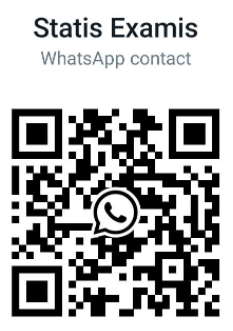Navigation » List of Schools » California State University, Northridge » Music » Music 306 – Introduction to Jazz » Spring 2022 » Final Exam
Question #2
A Bix Beiderbecke
B Louis Armstrong
C Buddy Bolden
D Joe King Oliver
Question #4
A epitomize the peak of traditional New Orleans polyphony
B feature soloists and highlight individual expression.
C were a racially integrated band.
D feature block-chord riffs in call-and-response patterns.
Question #5
A deemphasizing the role of the blues.
B all answers are true
C demonstrating his mastery of mutes.
D performing with a rhythmic energy that was quickly imitated.
Question #6
A Benny Goodman
B Woody Herman
C Sidney Bechet
D Eric Dolphy
Question #7
A Benny Goodman
B Fletcher Henderson
C Jimmy Lunceford
D Glenn Miller
Question #8
A all answers are true
B championed black musicians in the recording studio.
C was a nonmusician who promoted jazz.
D was born into a wealthy New York family.
Question #10
A Duke Ellington
B Mary Lou Williams
C Count Basie
D Benny Goodman
Question #11
A Fletcher Henderson
B Benny Goodman
C Duke Ellington
D Count Basie
Question #12
A Count Basie
B Artie Shaw
C Duke Ellington
D Benny Goodman
Question #13
A all answers are true
B became increasingly active as a composer.
C was a leader in the bebop (modern jazz) movement.
D was a devoted teacher of jazz history.
Question #14
A Black and Tan Fantasy
B Diminuendo and Crescendo in Blue
C Black, Brown and Beige
D Far East Suite
Question #15
A Duke Ellington’s co-composer and author of “Take the ‘A’ Train.”
B a member of Count Basie’s rhythm section.
C the clarinet soloist on many of Duke Ellington’s recordings from the Cotton Club.
D a boogie-woogie pianist.
Question #16
A Billie Holiday
B Louis Armstrong
C Bessie Smith
D Ella Fitzgerald
Question #17
A Ella Fitzgerald
B Cab Calloway
C Billie Holiday
D Louis Armstrong
Question #18
A Lester Young
B Charlie Parker
C Coleman Hawkins
D John Coltrane
Question #19
A Johnny Hodges
B Coleman Hawkins
C Ben Webster
D Lester Young
Question #20
A Valaida Snow
B Benny Carter
C Artie Shaw
D Benny Goodman
Question #21
A Billie Holiday
B Ella Fitzgerald
C Louis Armstrong
D Nancy Wilson
Question #22
A was a soloist with Duke Ellington whose solos had a romantic lyricism.
B played flashy passages in his upper register, often with growls.
C had a light sound, played rhythmically unpredictable phrases, and spoke a special slang.
D had a powerful sound with heavy vibrato and specialized in harmonic improvisation.
Question #23
A he never played in the United States.
B he was blind.
C his left hand was crippled in a Romany Gypsy campfire.
D he was deaf.
Question #24
A Blue Skies
B Heart and Soul
C Body and Soul
D One O’Clock Jump
Question #25
A alto
B tenor
C soprano
D baritone
Question #26
A Duke Ellington
B Willie “The Lion” Smith
C Art Tatum
D Fats Waller
Question #27
A Charlie Christian
B Pat Metheny
C Django Reinhardt
D Jim Hall
Question #28
A drummers cutting off soloists by “dropping bombs” in the middle of a phrase
B sessions at the Savoy Ballroom in which dancers would “cut a rug”
C competitive jam sessions in which jazz musicians would try to outplay each other
D recordings created by “cutting” recording tape (i.e., splicing) to eliminate errors
Question #31
A Charlie Parker
B Cannonball Adderley
C Lester Young
D Ben Webster
Question #32
A Bill Evans
B Herbie Hancock
C Bud Powell
D Teddy Wilson
Question #33
A Cannonball Adderley
B Charlie Parker
C Lee Konitz
D Johnny Hodges
Question #34
A a witty, genial stage persona.
B his beret, goatee, and unusually shaped trumpet.
C all answers are true
D his bebop-style big bands.
Question #35
A the marching band.
B gospel music.
C the blues.
D classical music.
Question #36
A it was more closely linked to popular music.
B each answer is true
C it used the tuba and banjo instead of the string bass and guitar.
D it was performed by small combos rather than big orchestras.
Question #37
A Charlie Parker and Dizzy Gillespie.
B Gene Krupa and Chick Webb.
C Kenny Clarke and Max Roach.
D Dexter Gordon and Bud Powell.
Question #38
A Dave Brubeck Quartet
B Miles Davis Quintet
C Modern Jazz Quartet
D Miles Davis Nonet
Question #39
A Coleman Hawkins
B John Coltrane
C Sonny Rollins
D Dexter Gordon
Question #40
A Lennie Tristano
B Chet Baker
C Gerry Mulligan
D Miles Davis
Question #41
A the invention of the LP (long-playing record).
B the Civil Rights movement.
C television.
D the end of Prohibition.
Question #43
A a founding member of the Gerry Mulligan Quartet.
B the leader of the Jazz Messengers.
C a founding member of the Modern Jazz Quartet.
D the drummer for the Dave Brubeck Quartet.
Question #44
A Teddy Wilson and Billy Strayhorn.
B Lennie Tristano and Tadd Dameron.
C Jelly Roll Morton and Duke Ellington.
D Art Tatum and Fats Waller.
Question #45
A Thelonious Monk
B Bill Evans
C Red Garland
D Bud Powell
Question #46
A Scott LaFaro
B Charles Mingus
C Slam Stewart
D Jimmy Blanton
Question #47
A Benny Goodman Orchestra.
B pit band at the Cotton Club.
C rhythm section at Palomar Ballroom
D rhythm section at Minton’s Playhouse
Question #48
A violinist
B bassist
C pianist
D drummer
Question #49
A Lester Young
B Miles Davis
C Dizzy Gillespie
D Charles Mingus
Question #50
A The murder of Emmett Till in Mississippi.
B A governor bringing in the National Guard to prevent the integration of Central High School in Little Rock, Arkansas
C The lunch counter sit-ins in Greensboro, North Carolina.
D Rosa Parks’s defiance of segregation in Montgomery, Alabama.
Question #52
A Count Basie
B Fletcher Henderson
C Benny Goodman
D Duke Ellington
Question #53
A So What?
B Acknowledgement
C Giant Steps
D My Favorite Things
Question #54
A Roy Hargrove
B Clifford Brown
C Lee Morgan
D Miles Davis
Question #55
A Sonny Rollins
B John Coltrane
C Joe Henderson
D Wayne Shorter
Question #56
A cool
B bebop
C avant-garde
D fusion
Question #57
A The bassist was freed from keeping time to play strong melodic ideas.
B Evans replaced the drummer with an electric guitarist.
C The accompanying instruments played simply to accommodate Evans’s stride style.
D Each of the three pianos in the group performed in a different style.
Question #58
A a graphic depiction of an intense romance.
B the birth of Coltrane’s first son, Ravi.
C Possible Answer an opera by George Gershwin.
D Coltrane’s profound religious experience.
Question #59
A improvising with scales over very few chords.
B the technical challenge of improvising in high registers.
C combining chromatic chord changes with melodies in the major mode.
D drawing the melody for improvisation out of the chord changes.
Question #60
A E.S.P.
B Portrait in Jazz
C Giant Steps
D Kind of Blue
Question #61
A swing, bebop, and fusion
B swing, Third Stream, and the avant-garde
C cool, hard bop, and fusion
D bebop, hard bop, and the avant-garde
Question #62
A places Coltrane in the midst of a large jazz orchestra.
B focuses relentlessly on Coltrane’s approach to harmonic improvisation.
C is divided into four “movements” with abstract titles (e.g., “Acknowledgement”).
D features Coltrane playing songs from Broadway shows.
Question #63
A Wayne Shorter
B Coleman Hawkins
C Dexter Gordon
D John Coltrane
Question #64
A Coleman Hawkins.
B Duke Ellington.
C Charlie Parker.
D John Coltrane.
Question #65
A Porgy and Bess and Sketches of Spain.
B Kind of Blue and Milestones.
C Walkin’ and Steamin’.
D E.S.P. and Sorcerer.
Question #66
A John Coltrane, Ornette Coleman, and Cecil Taylor.
B Miles Davis, Gil Evans, and Herbie Hancock.
C Sonny Rollins, Wes Montgomery, and Art Blakey.
D Charlie Parker, Dizzy Gillespie, and Max Roach.
Question #67
A Heliocentric Worlds.
B Arkestra.
C Saturn Songsters.
D Interplanetary Experience.
Question #68
A a performing group founded by Lester Bowie and Joseph Jarman.
B an avant-garde collective from Chicago.
C the cultural wing of the National Association for the Advancement of Colored People (NAACP).
D the official name of the orchestra organized by Sun Ra.
Question #69
A composing through the use of “unit structures.”
B playing long, extended pieces in concert.
C a percussive approach to the piano.
D all answers are true
Question #70
A Free Jazz
B Our Music
C Black Music
D The New Thing
Question #71
A Jimmy Smith and Louis Jordan.
B Dizzy Gillespie and Mario Bauzá.
C Charlie Byrd and Stan Getz.
D Nat “King” Cole and Frank Sinatra.
Question #72
A Miles Davis
B Dizzy Gillespie
C Charlie Parker
D Thelonious Monk
Question #73
A Reggaeton
B Bossa Nova
C Salsa
D Cubop
Question #74
A Salsa
B Cubop
C Bossa Nova
D Reggaeton
Question #76
A all answers are true
B a popular Cuban dance band leader of the 1930s and 1940s.
C the founder of salsa music in the 1970s.
D a Cuban conga player who performed with Dizzy Gillespie.
Question #77
A Antônio Carlos Jobim
B Chano Pozo
C Machito
D Mario Bauza
Question #78
A all answers are true
B Spanish for “keystone.”
C a time-line pattern on which Cuban music is based.
D a syncopated rhythm, used in two forms (son and rumba).
Question #79
A Brad Mehldau
B Herbie Hancock
C Chick Corea
D Keith Jarrett
Question #80
A Weather Report
B Head Hunters
C Martin Medeski and Wood
D Mahavishnu Orchestra
Question #81
A jam band
B all answers are true
C funk
D fusion
Question #82
A Medeski, Martin, and Wood
B Radiohead
C Mos Def
D Herbie Hancock
Question #83
A because the musicians have little formal training or jazz pedigree
B because their audience overlaps with that of various rock-leaning artists such as Phish and Dave Matthews
C because they tour in a camper
D because they refuse to use acoustic instruments
Question #84
A often berates his audience for making noise or not paying attention
B played electric piano with Miles Davis but disliked the experience
C recorded a solo LP that has sold more than 4 million copies
D most regular work has been as part of a quartet with saxophonist Charles Lloyd
Question #85
A used guitar strings instead of bass strings
B used a wide range of effects pedals
C removed the frets and filled in the holes with wood filler
D extended the upper range by adding frets to the fingerboard
Question #86
A Jaco Pastorius
B Chick Corea
C Wayne Shorter
D Joe Zawinul
Question #87
A Indian classical music
B Eastern religion
C Celtic fiddle music
D Flamenco guitar
Question #88
A Davis did not think it should be marketed as jazz.
B The album did not find a broad audience.
C All of the songs were composed specifically for this recording session.
D The studio sessions were extensively edited.
Question #89
A simplicity
B the abstract nature of rock compositions
C atonal, noisy timbres
D the strictness of rock recording practices
Question #90
A jazz critics and magazines beginning to take rock seriously
B stagnation of mainstream jazz style
C death of John Coltrane
D young jazz musicians unwilling to embrace pop artists
Question #91
A harmonic complexity
B syncopated, danceable bass lines
C interlocking rhythmic layers
D a focus on sweet, hummable vocal melodies
Question #92
A It didn’t have the support of major record labels.
B It wasn’t marketable by promoters.
C It was too sophisticated for general audiences.
D It was aimed at a teen audience.
Question #93
A Afro-Cuban and classical
B Jazz and doo wop
C Black race records and rural hillbilly music
D Country and swing
Question #94
A scat singing
B comping
C block-chord texture
D free improvisation
Question #95
A Wynton Marsalis
B Miles Davis
C Louis Armstrong
D Dizzy Gillespie
Question #96
A Universities
B Commercial bands
C Europe
D all are true
Question #97
A Mary Lou Williams
B Nat King Cole
C Bud Powell
D Art Tatum
Question #98
A won Grammy awards in jazz and classical categories
B from a musical New Orleans family
C insisted on a dress code inspired by the elegance of the swing bands
D he is appreciative of and tolerant toward all jazz styles.
Question #99
A led to further teaching opportunities for several faculty members
B faculty included John Lewis, Gunther Schuller, Ornette Coleman, and Max Roach
C first time a group of faculty gathered together for the sole purpose of teaching jazz
D it operated for several decades.
Question #100
A 1980s
B 1930s
C 1950s
D 1960s
Question #101
A Jazz creativity is inextricably bound to its past.
B Jazz evolves in response to contemporary pop culture.
C The music of New Orleans and the Swing Era are the only true jazz styles.
D Jazz masters move the music along in radical leaps of creativity.
Question #102
A Vijay Iyer
B Abdullah Ibraham
C Jason Moran
D Brad Mehldau
Question #103
A Lingua Franca
B Dance
C Fusion
D Carnatic
Question #104
A Miles Davis
B Esperanza Spalding
C Diana Krall
D Jaco Pastorius
Question #105
A Joe Lovano
B Patti Austin
C Yo-Yo Ma
D Pat Metheny
Question #106
A embraced as a generation’s dance music
B influential in popular and classical idioms
C supported by academia
D firmly established as art
Question #107
A fusion
B swing
C repertory bands
D bebop
Question #108
A argues that the past should be set aside and no longer studied
B recalls former arrogance that leads to moral chaos and military struggle
C attempts to convey the idea that the great political and cultural movements are all behind us
D suggests that the current moment offers a privileged vantage point from which to view the past




